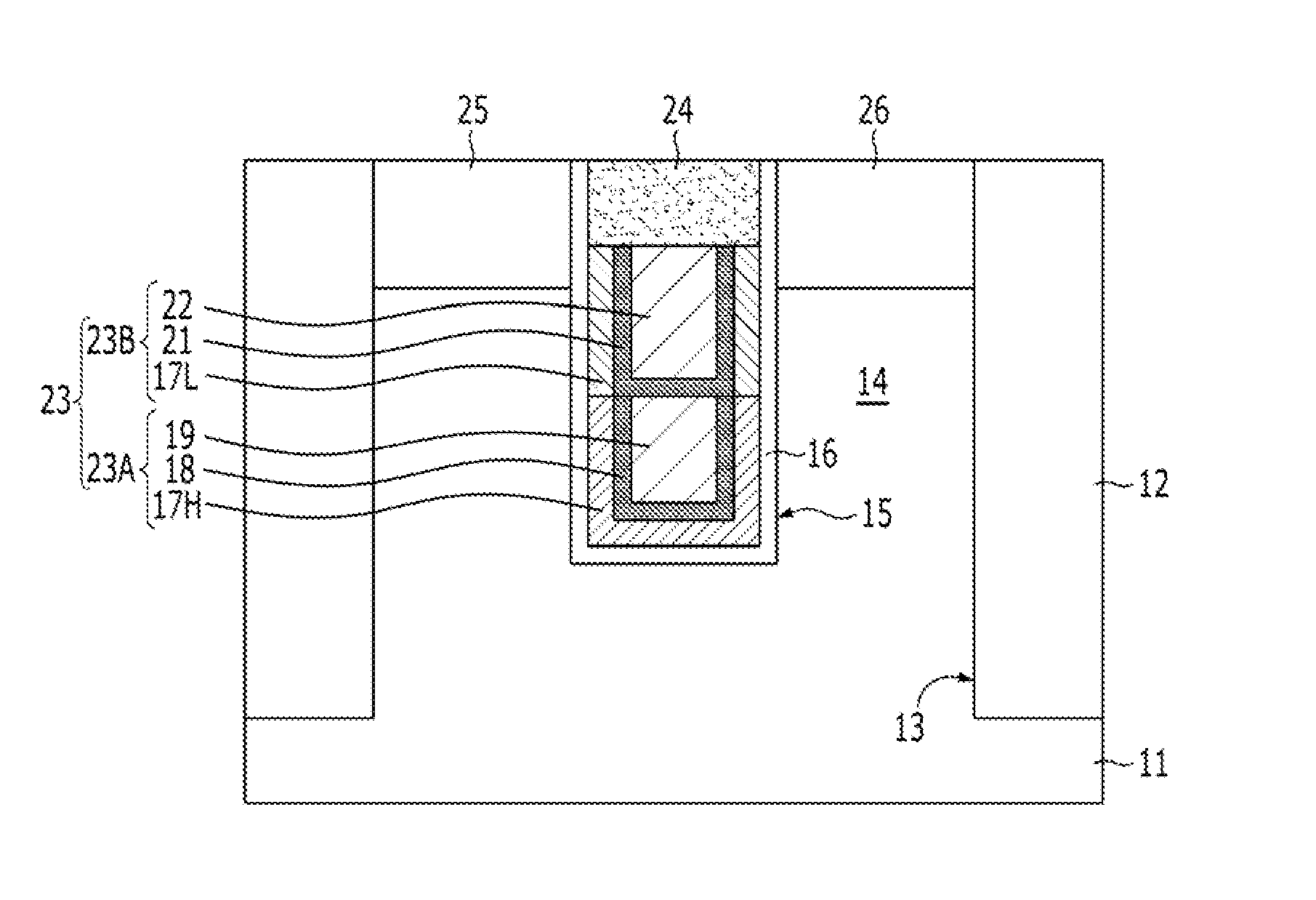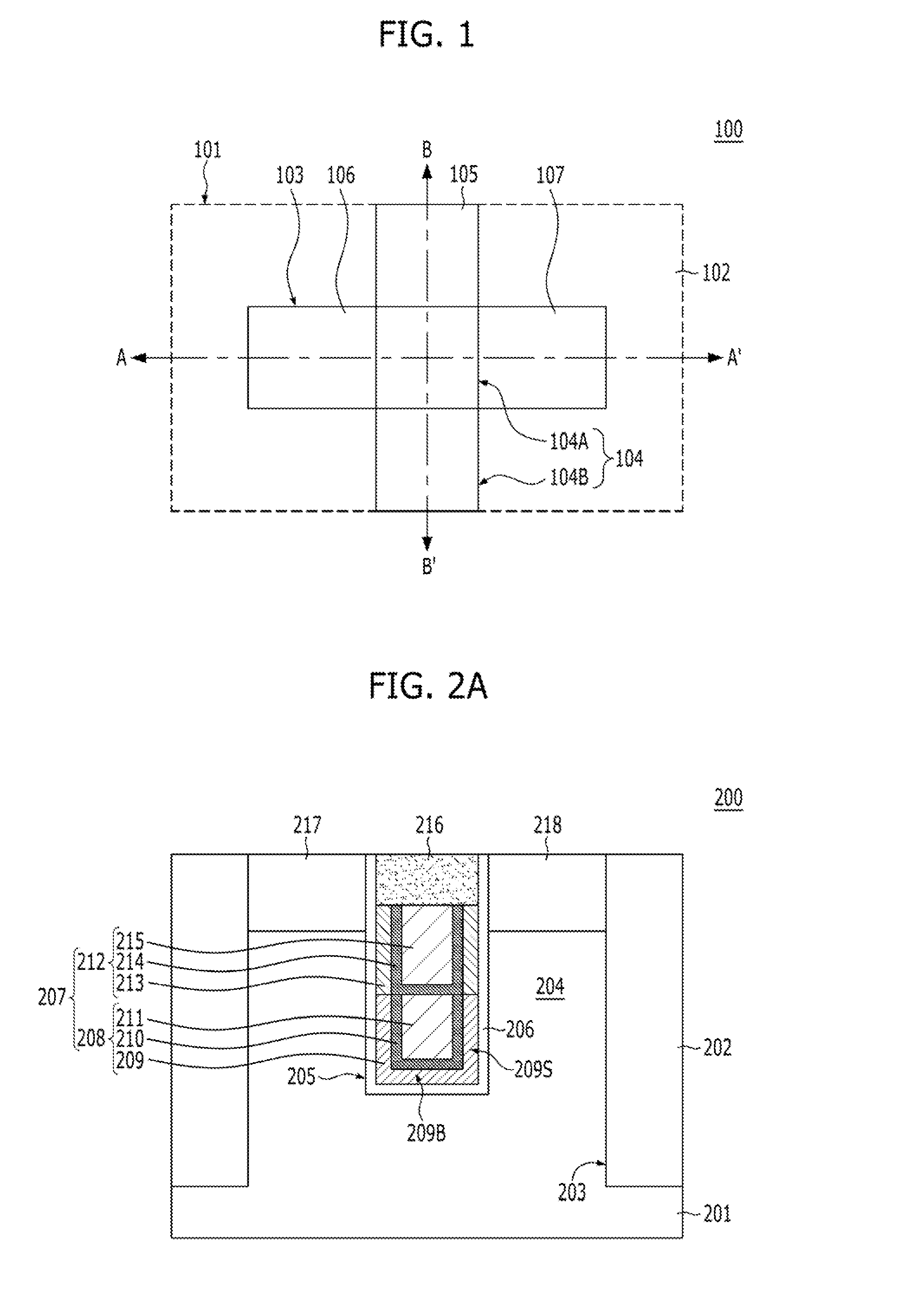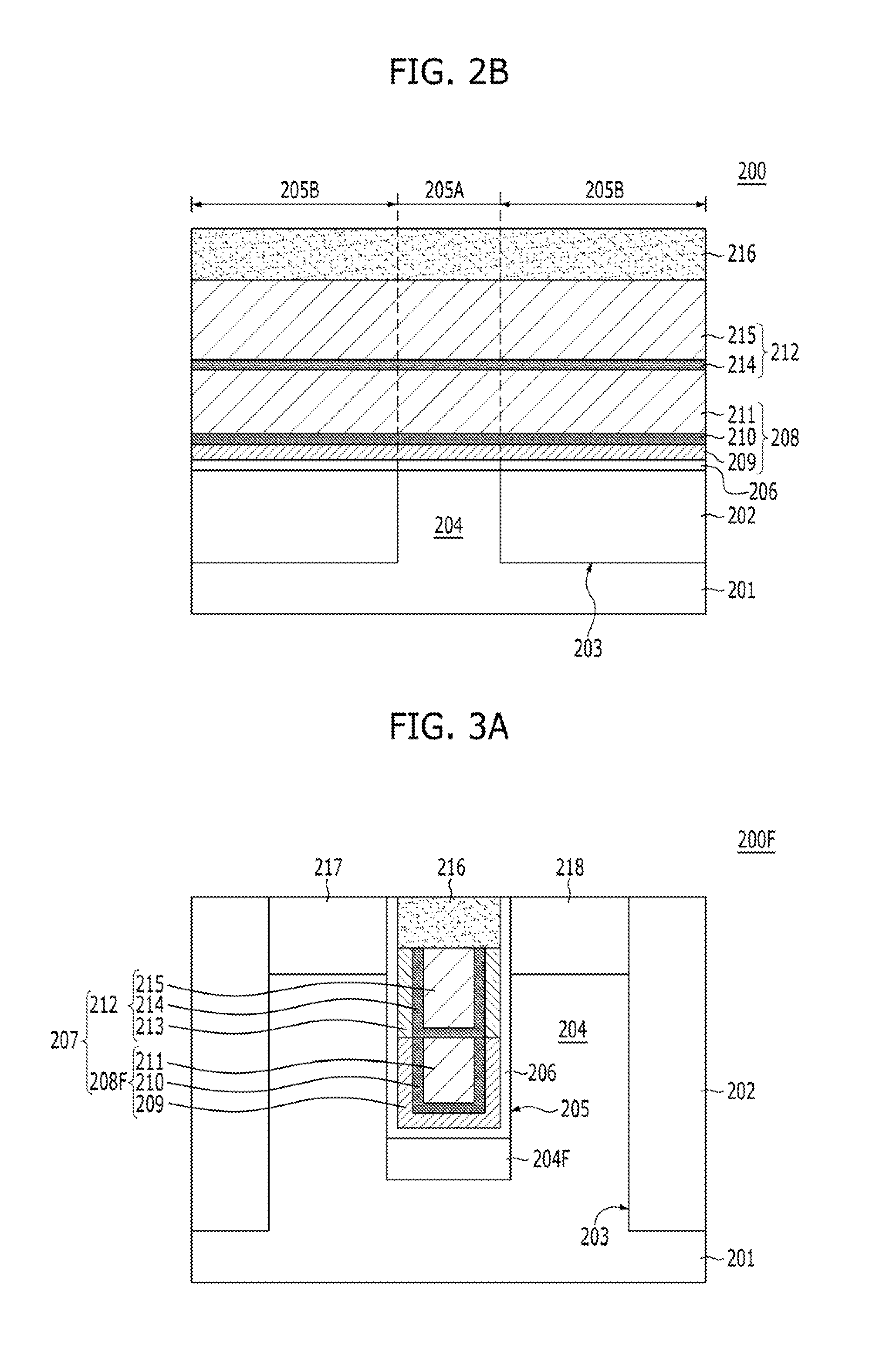Dual work function buried gate type transistor and method for fabricating the same
a gate type transistor and dual work technology, applied in the field of transistors, can solve the problems of high work function, increased gate resistance, and difficult to reduce gate-induced drain leakage (gidl) in buried gate type transistors, and achieve the effect of reducing gate-induced drain leakage and improving current drivability
- Summary
- Abstract
- Description
- Claims
- Application Information
AI Technical Summary
Benefits of technology
Problems solved by technology
Method used
Image
Examples
first embodiment
[0036]FIGS. 2A and 2B are views illustrating a transistor in accordance with the present invention. FIG. 2A is a cross-sectional view taken along the line A-A′ of FIG. 1. FIG. 2B is a cross-sectional view taken along the line B-B′ of FIG. 1.
[0037]A transistor 200 is formed in a substrate 201. The substrate 201 may include a semiconductor substrate. The substrate 201 may be a silicon substrate. An isolation layer 202 is formed in the substrate 201. The isolation layer 202 is filled in an isolation trench 203. An active region 204 is defined in the substrate 201 by the isolation layer 202.
[0038]A trench 205 which has a predetermined depth is defined in the substrate 201. The trench 205 may be a line type which extends in any one direction. The trench 205 has a shape which extends across the active region 204 and the isolation layer 202. The trench 205 has a depth that is shallower than the isolation trench 203. The trench 205 includes a first trench 205A and a second trench 205B, show...
third embodiment
[0083]FIGS. 6A and 6B are views illustrating a transistor in accordance with the present invention. FIG. 6A is a cross-sectional view taken along the line A-A′ of FIG. 1. FIG. 66 is a cross-sectional view taken along the line B-B′ of FIG. 1.
[0084]Referring to FIGS. 6A and 66, a transistor 300 is formed in a substrate 301. An isolation layer 302 is formed in the substrate 301. An active region 304 is defined in the substrate 301 by the isolation layer 302. The isolation layer 302 is filled in an isolation trench 303.
[0085]A trench 305 with a predetermined depth is defined in the substrate 301. The trench 305 may be a line type which extends in any one direction. The trench 305 has a shape which extends across the active region 304 and the Isolation layer 302. The trench 305 has a depth that is shallower than the isolation trench 303. The trench 305 includes a first trench 305A and a second trench 305B. The first trench 305A is defined in the active region 304. The second trench 305B ...
fourth embodiment
[0117]In a method for fabricating the transistor in accordance with the present invention, the remaining processes (not including the process for forming a fin region) are the same as shown in FIGS. 8A to 8F. For the process of forming a fin region, reference may be made to FIGS. 5A to 5D.
[0118]FIG. 9 is a view illustrating an exemplary semiconductor device including a transistor in accordance with the embodiments of the present invention.
[0119]Referring to FIG. 9, a semiconductor device 400 includes a first transistor 420 and a second transistor 440. The first transistor 420 and the second transistor 440 are formed in a substrate 401, and are isolated from each other by an isolation layer 402.
[0120]The first transistor 420 includes a buried gate electrode 406, a first source region 416, and a first drain region 417. The buried gate electrode 406 is formed in a trench 403. The trench 403 has a shape which extends across the isolation layer 402 and an active region 404. A first gate ...
PUM
 Login to View More
Login to View More Abstract
Description
Claims
Application Information
 Login to View More
Login to View More - R&D
- Intellectual Property
- Life Sciences
- Materials
- Tech Scout
- Unparalleled Data Quality
- Higher Quality Content
- 60% Fewer Hallucinations
Browse by: Latest US Patents, China's latest patents, Technical Efficacy Thesaurus, Application Domain, Technology Topic, Popular Technical Reports.
© 2025 PatSnap. All rights reserved.Legal|Privacy policy|Modern Slavery Act Transparency Statement|Sitemap|About US| Contact US: help@patsnap.com



